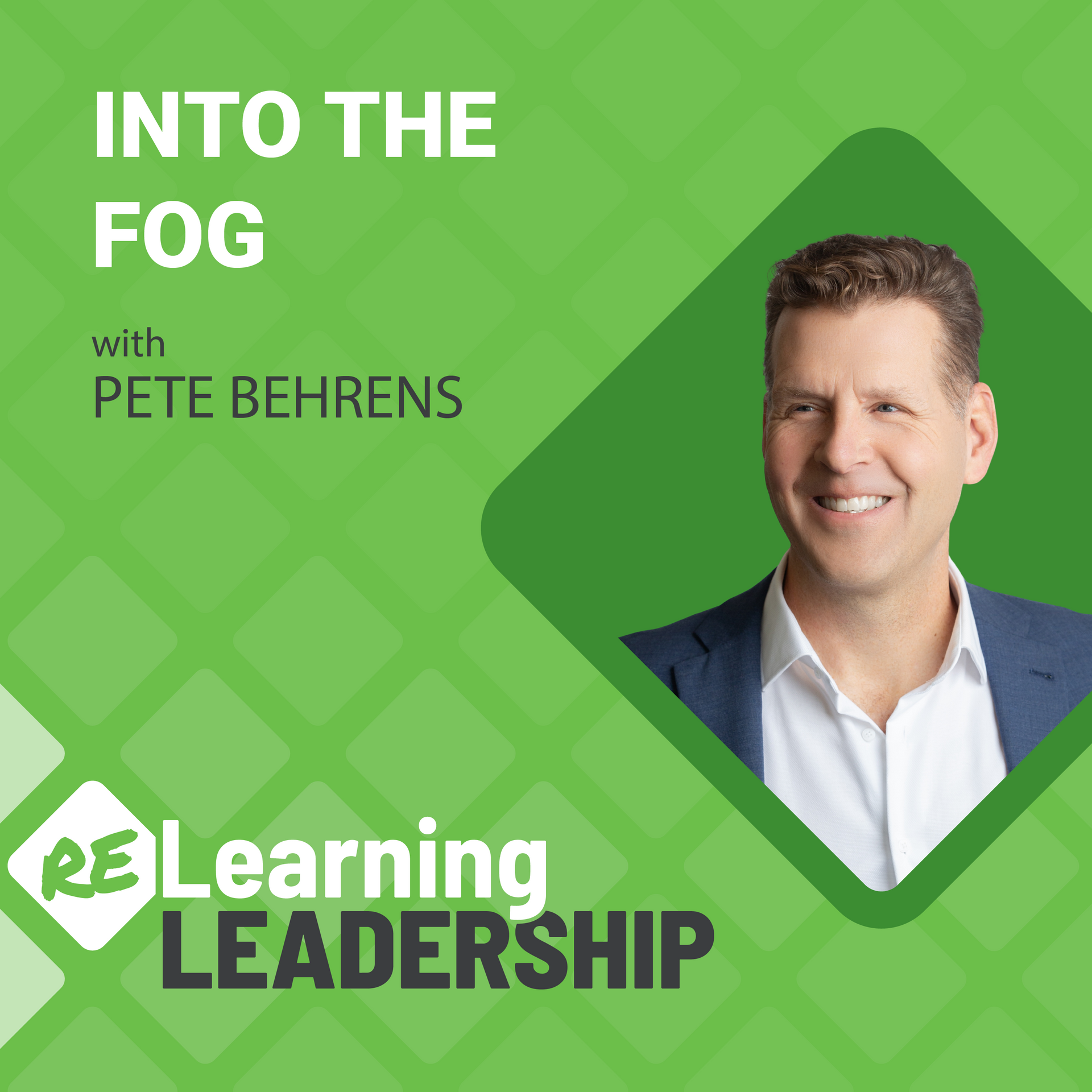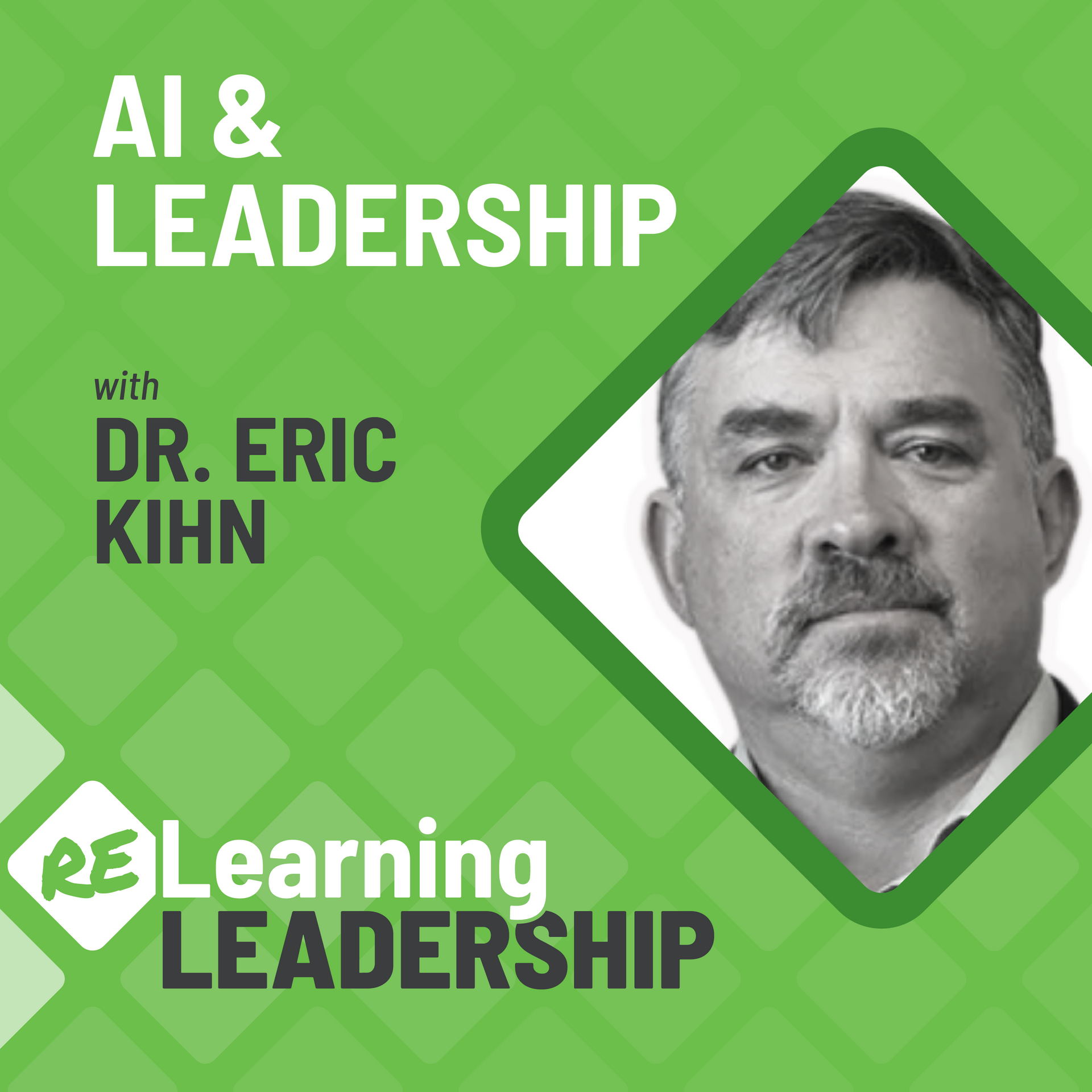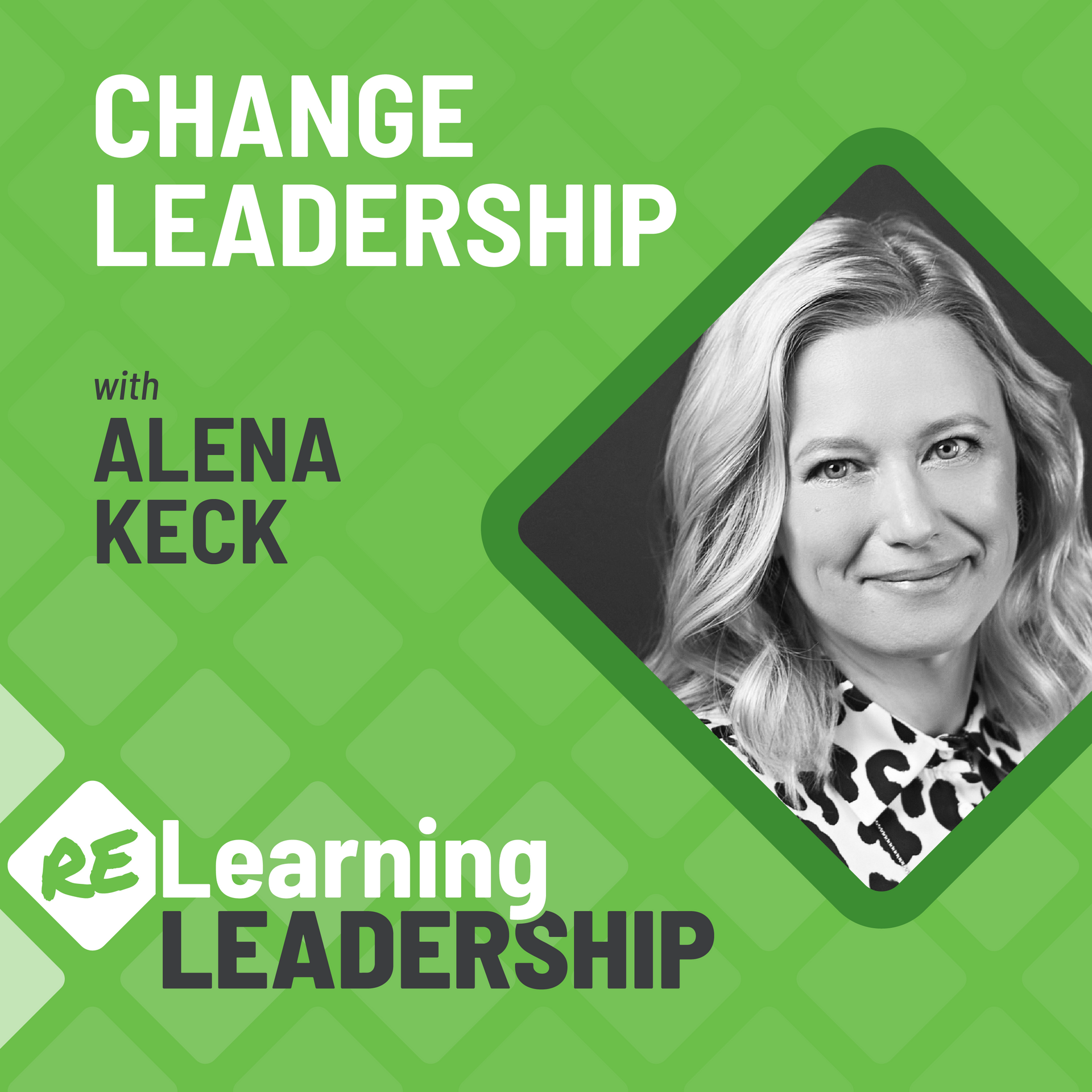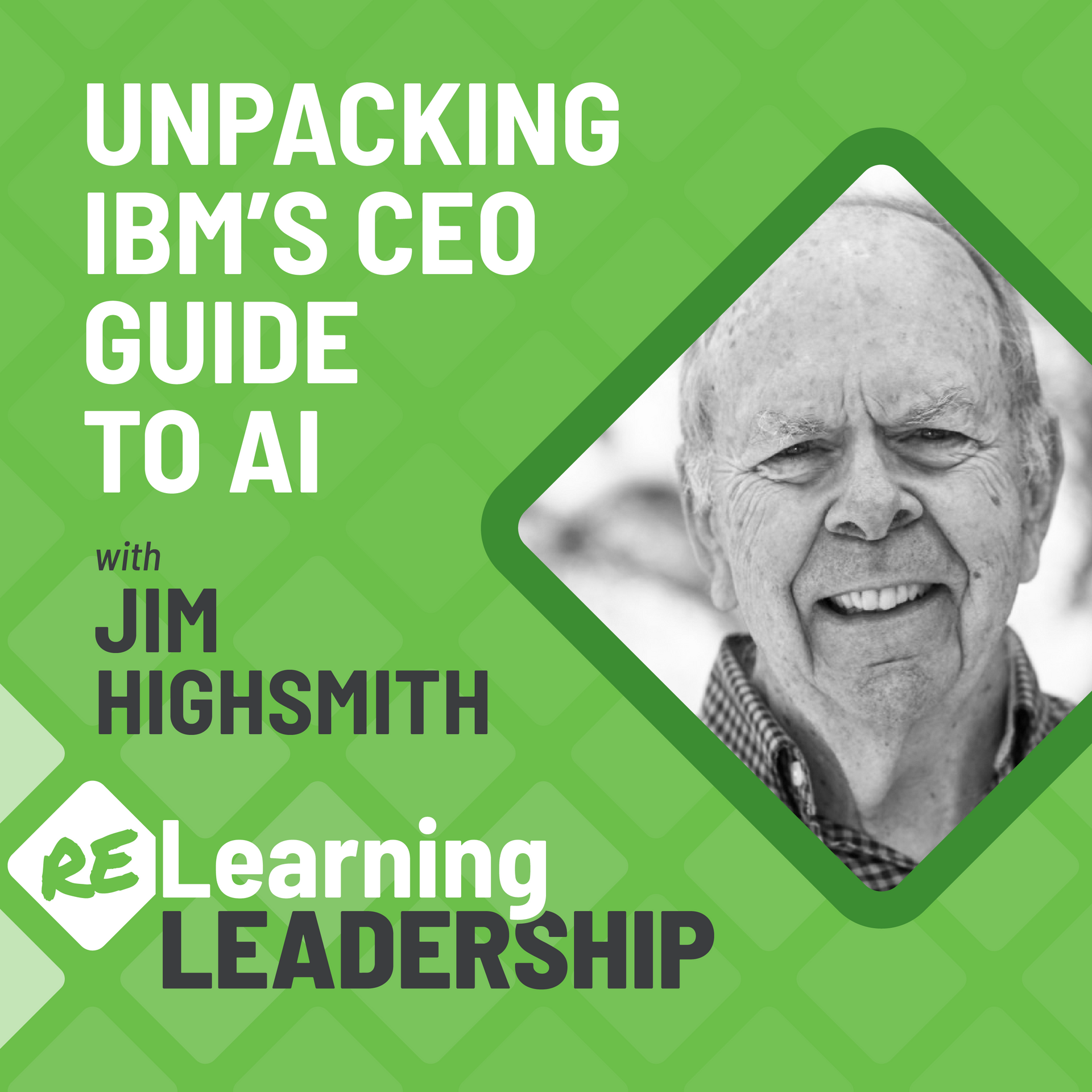19: Focus on the Music
Predictability through improvisation — what project management can learn from jazz
Rob Tieman is the Director of the Project Management Office at the Virginia Department of Transportation.
Gerald Leonard is a Strategic PMO Advisor for the government, Juilliard-trained musician, and author of Workplace Jazz.
Together with Pete, they explore how insights from jazz have helped improve project predictability and workplace culture.
Rob Tieman, Director of the Project Management Office
Rob has over twenty-five years of progressive management and engineering expertise that is concentrated in developing, delivering, and leading transportation projects, programs, and portfolios.
Rob also serves on a number of VDOT and industry committees. Most notably he is the Chairman of AASHTO’s (American Association of State Highway and Transportation Officials) Technical Committee on Project Management (TCPM), is a member of AASHTO’s Committee on Design (COD), and sits on University of Virginia’s Civil Engineering Professional Advisory Board. Rob holds a Bachelor of Science degree in Civil Engineering from the University of Illinois, is a licensed Professional Engineer (PE), and certified Project Management Professional (PMP).
Rob and his beloved wife are blessed with two daughters. He loves spending time with family and friends, listening to live music, and traveling. His ideal day would include hiking in the mountains or sailing on a catamaran in the Caribbean.
Connect with Rob
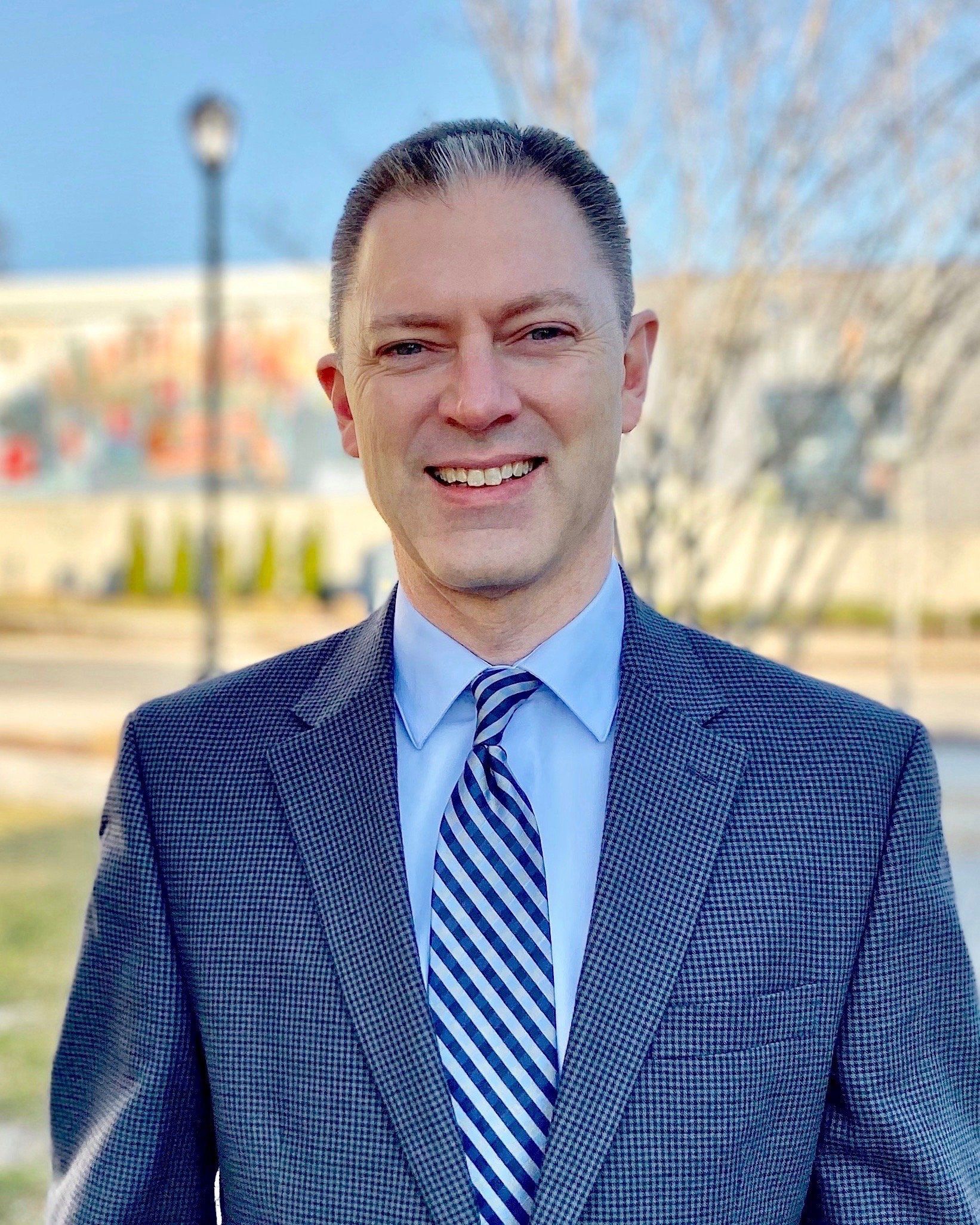
Gerald J. Leonard, Strategic PMO Advisor for the Government
Mr. Gerald J. Leonard is a PMP, PfMP, and a C-IQ Coach; and he’s the Publishing Editor, CEO, and Founder of the Leonard Productivity Intelligence Institute, as well as the CEO of Principles of Execution LLC a Certified MBE dba Turnberry Premiere, a Strategic Project Portfolio Management, IT, and Culture Change consulting firm with over 25+ years of experience working with large Federal and State Governments and Multi-National Corporations.
Gerald helps CIOs, VPs, and Directors of Project Management build, engage, and sustain high-performing agile teams that can accomplish more every day.
In Gerald’s leisure time, he loves to play golf and travel internationally.
Visit Gerald’s Website.
Connect with Gerald
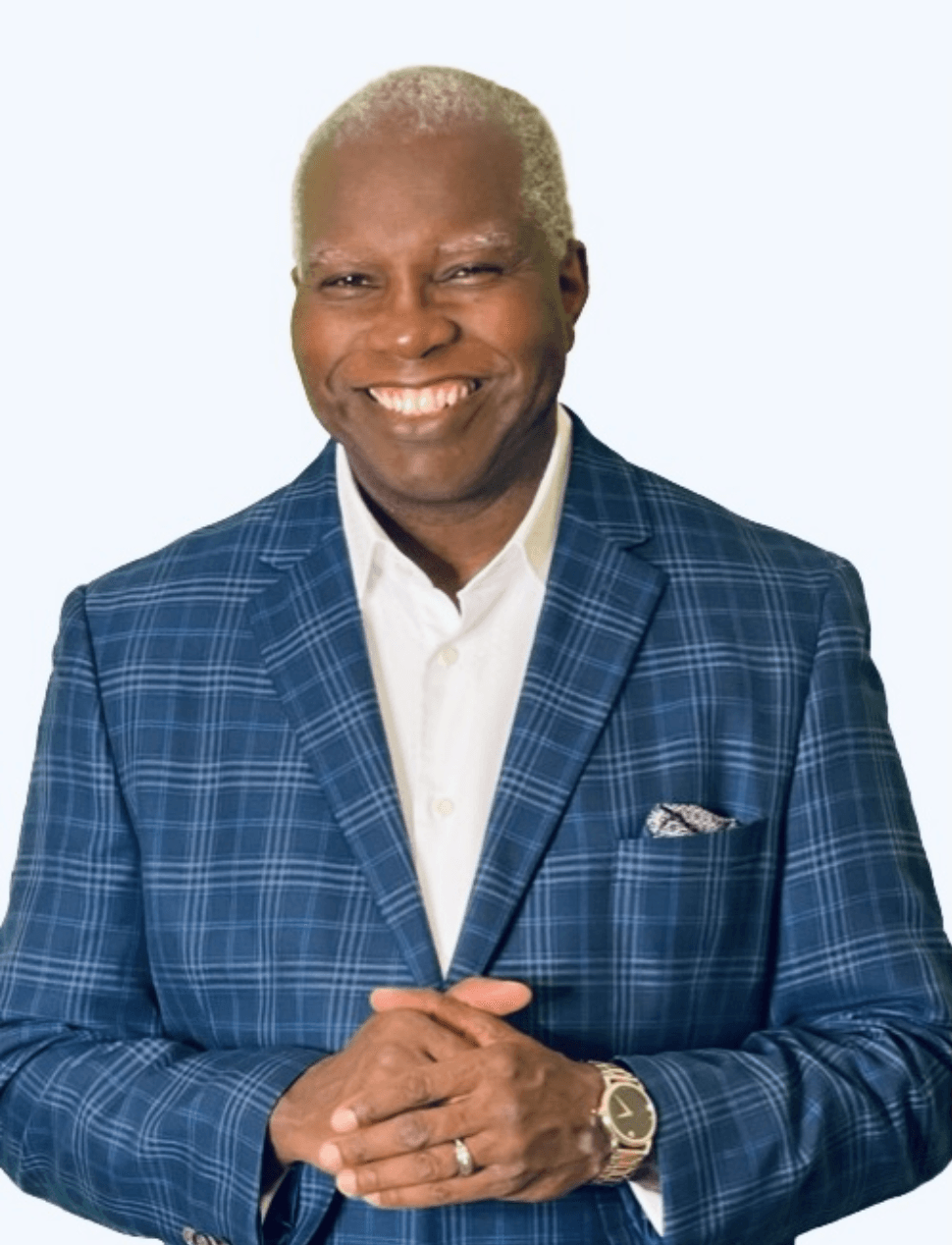
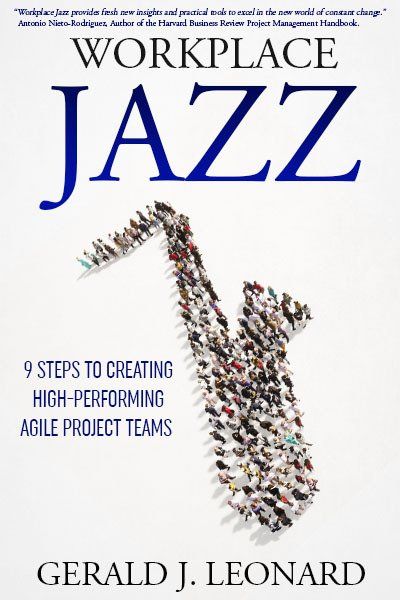
Workplace Jazz
Following a team development system that jazz musicians use naturally provides clarity, purpose, and structure is the key to creating high-performing agile teams. It is attainable through this book, Workplace Jazz.
In Workplace Jazz, the author raises a battle cry for individual and corporate responsibility in building cultures that are healthier and more productive for those working in them.
What should leaders do to address this workforce engagement and productivity gap? Should companies keep implementing culture improvement processes and procedures that do not address the emotional connection that teams need?
Workplace Jazz offers a step-by-step process, enhanced with stories, neuroscience research, case studies, metaphors, and a strategic blueprint for developing connected and high-performing project teams based on the author’s experiences as a professional musician, certified conversational intelligence coach, and certified business
consultant.
Get the book.
Relearning from this episode…
Rob and Gerald feel like two strangers at a party who stumble across each other and find out they share so many similarities they end up swapping stories all night long. It was a pleasure to host them on this episode.
What am I taking away from this discussion?
First, focus on the music. Let each expert play their instrument, so-to-speak, in contributing to the team. Leaders should focus on integrating those diverse perspectives into a cohesive whole.
Second, embrace the duck. Predictability and improvisation are not at odds — they build on each other. Jazz musicians use predictable rhythms to enable creative improvisation. Effective leaders can use improvisation to help stay predictable. Display grace above the water powered by agility below.
And finally, stay human. While we are trained to solve technical problems and use tools to manage our work, leaders need focus on the people doing the work and the culture they work in.
We Celebrate Joy Zimmerman’s Milestone
Joy Zimmerman, the creator of the music you hear on this podcast, is celebrating an award-winning album this summer. The Canvas Before Us reached Top #8 on the International Folk Chart!
Visit Joy Zimmerman Music
For this episode, I was inspired by her leading track,
Prairie Wind, sharing a story of a young woman’s journey west and her lonely life on the plains. Leaders may often feel alone on their journey and may feel comfort in her words, “I will be your comfort here. Oh, I will be your comfort here.”

Episode Transcript
Pete Behrens:
What can project management learn from a jazz band?
Welcome to another episode of Relearning Leadership, where we explore a specific leadership challenge and break it down to help improve your leadership, your organization…and even your personal life.
Today, we marry two unlikely bedfellows: project management and improvisation. That’s right! What does this look like, you ask?
Rob Tieman:
I would use the mental image of a duck gliding across the lake in a serene park. Hopefully our end-users see that. But, under the water, those little feet are paddling like crazy.
Pete Behrens:
That was Rob Tieman, Director of the Virginia Department of Transportation, sharing his view. Gerald Leonard, author of
Workplace Jazz, also joins our band to help us focus on the music.
Gerald Leonard:
Everyone comes to the table, really, knowing their instrument. But then the conductor says,
“This is the big idea—right?—for the show.” And so, everyone goes, “Okay. Let me forget about my instrument. Now, let me focus on the music.”
Pete Behrens:
Together, we explore how improvisation is crucial to effective project management.
I’m Pete Behrens. Thank you for joining us today, let’s dive in.
Today, I want to run a bit of an experiment. While I had a chance to sit down with our two guests for a great dialogue, I’m going to step out now to narrate the discussion and provide some context as we listen. Let me start by having them introduce themselves.
Rob Tieman:
My name is Rob Tieman, and I'm director of the Project Management Office at the Virginia Department of Transportation. And it is a privilege to be here and share our story today. And discuss exactly how those two very strange bedfellows mate and produce some great results. [Laughs]
Gerald Leonard:
Excellent. Excellent. And my name is Gerald Leonard. And I'm the author of
Workplace Jazz and have been, really, working with Rob and the folks at the Virginia Department of Transportation since 2014. And it's been a really interesting journey to see this whole process come together, and I'm very grateful for Rob being on the call with me today to have this conversation.
Pete Behrens:
What
Gerald didn’t mention is that he is also a strategic PMO advisor for the government, a TedX speaker and a former professional, Juilliard-trained jazz bass player. An interesting collection, to say the least.
So, to set the stage for our story, Rob shared the VDOT project management landscape.
Rob Tieman:
So, the Virginia Department of Transportation is the third largest department of transportation in America. So, we have about 6,000 projects that are active at any one time. And our six-year plan is worth about 24 to 26 billion dollars. And that is, really, where our story begins, as I'd like to relate it today. Our six-year plan, like a lot of six-year plans, used to be a way to determine when to spend the money. We have all these different funding sources. They have all these different rules and constraints associated with them. And we call it
colors of money.
And you need to have the right amounts of the right colors of money and the right places at the right times to keep the projects moving forward.
And it's a little more complicated than that, because every project has multiple phases. So it's just not the money for this project, it's the money for each phase within that project. So if you're talking about our portfolio of 6,000 projects, that's a lot of cats to herd in one direction.
Pete Behrens:
And just when you think you’ve hit your complexity limit,
he further shared how the political landscape impacts their project management landscape.
Rob Tieman:
Every four years we have a new governor, and the priorities shift a little bit. And there are some advantages of that; it created a great nimbleness in being able to shift priorities. But there's also some inherent inefficiencies. And our legislature decided that it was a wise idea to constrain that a little more by fully funding all our projects in our six-year plan. So, now, if there is a transportation project in the six-year plan, it is fully funded. Which dramatically changed how we did business. And what that required of us—is to be far more accurate and precise in our schedules. Because we were looking at projects that—some of these last three, five, seven or more years, pending the complexity of the project and the amount of right-of-way that you need
and utilities you need to relocate and such. So we needed to become much more accurate in our schedules. And that's something I'd like to dig a little deeper into.
Pete Behrens:
Okay. So now that we’ve visualized VDOT’s vast and complex project landscape, I asked them both to take us back to the starting point of this story and what the situation was like.
Gerald Leonard:
When I met with VDOT in 2014, we had 14,000 projects in the 16 billion dollar budget. And about 5,000 of those projects, we had to close-out, so we really had to do a lot of cleanup. There was also a lot of cultural things that we had taken into consideration to make it successful. I remember the first meeting. We're all sitting around this large table. And the CIO looks at me, and he goes,
“Okay. You're the subject expert. We're behind schedule. I know we haven't started yet, but we're behind schedule because we already promised the governor that we'll be done within fifteen days from now, so we need to show something within the next fifteen days.” And so, I literally sat there in the meeting and negotiated with the CIO of VDOT and said,
“Okay, do you need to have it in production?” “No. We just need to show something.” “Okay, so we can do something in development. “And, does it need to be a ton of projects, or can we just have one project?” And basically, that was how we started this project. And we were able to, literally, from scratch, meeting daily, meet with the CIO and deliver the proof-of-concept to him in fourteen days. And so, we ended up with a day early and were able to prove the concept. So he was able to go back to the governor and the commissioner of the state and say,
“This will work!” And that's how the project got legs and stuff, kept going on.
Pete Behrens:
Do you notice the shift? Among a landscape with thousands of projects and a multitude of phases, budgets, and schedules, what is most important is
what is going on with my project, right now. And
how will you fix it right now?!
The macro is completely influenced by the micro, and vice versa. Rob also shared his early days.
Rob Tieman:
I was thrilled to join the Virginia Department of Transportation in my current role. And, I remember, before I joined, someone had forwarded me an article of things to be wary of. And one was to assume the solutions you have used in the past will work in the future. [Laughs] And that really stuck with me, because a lot of solutions just are not scalable. And I think that's directly applicable to this situation, where our previous system of keeping schedules, which worked very well for us for many years. But we needed more accuracy and we needed to be more predictable and reliable in our forecast of when we would need the money at certain times. And that required not just an incremental improvement, but a giant leap forward, which is what we did. And Gerald really helped us with that. And we went to Microsoft Project PWA, which the the portfolio version of Microsoft Project which is the engine behind the scenes…[fades out].
Pete Behrens:
Okay. I’ll spare you the details. Gerald and Rob love to dive into the technology side of their transformation, but let’s just say they did some great technical voodoo. So that gives us a chance to explore the cultural side of the transformation, a topic I wanted to connect to a bit more.
Rob Tieman:
It was tremendously successful from a technical point-of-view and really took our department and leapt us forward, in an enormous way, to be more predictable with their schedules. And that was a technical side, which was substantial, but there was also a very substantial cultural shift that we needed to take care of. And some of those were expected; some of them were not. All of the sudden, your schedule for all your projects was visible by everybody. I think there were some that felt like they didn't perceive they had the control they had before. And everything was very transparent and very visible. And trying to overcome the feeling some had of,
“This isn't a tool to help me. This is a way to keep track and Big Brother-overstep-his-bounds, perhaps, and watch my progress.” That changing level of accountability was something we struggled with, as an organization, to convince people that this is not a way we're keeping track of you. This is the way that we're improving how we do business.
Pete Behrens:
Do you recall our last episode on the paradox of change? If not, I suggest you go back and listen to that one. Personally, I connected to Rob’s story here. As a VP of Engineering, when I brought Agile practices to my teams, they also felt micromanaged and exposed. All of this new data creates discomfort, as Gerald explains...
Gerald Leonard:
It makes them feel accountable. And so, you know, one of the things that we had to do, and one of the lessons I have learned through my years of experience is—when you're rolling something like this out, you have to make it as easy as possible for the end-users. And because I'm a performer, a musician, I kind of equate it to being at a concert where you have the people in the front row. And those are the people that you're talking to and working with in the office every day. But you also have people in the balcony, and those are the project managers who have to use the system. And maybe they're out in Bristol, or maybe they're out in Chesapeake, and
they don't come into the office, because there's nine different districts within the department. And there's over a thousand project managers. So, how do you make sure that everyone is inclusive and understands the process and the experience?
And so, by taking away the excuses that this is so complex and—literally, we hid so much of the system, even today, that—there's so much of the system that they're not using because we just want to focus on the things to make it simple, even though it's complicated under the hood. And that really helped with the cultural aspect of rolling it out and creating adoption as well.
Rob Tieman:
We went around and invested a lot of time going to every district to get face time with the project managers. And, as Gerald said, we have a bunch of them in nine separate districts across our state. And that is an enormous time commitment to do. It's something that has been complicated with COVID, but even after the initial implementation, we and PMO still try to get out there to every district at least once a year so we can be in front of the project managers. And I think that does a couple things. There's a lot of uncertainty with anything new, and most people don't like change or are hesitant to embrace it. And I think it takes away some of the mystery of it. And also frame it in the context of why it's important, that we need, in transportation, accurate schedules, for this reason. We need the right money in the right place at the right time, otherwise the project stalls. That's what we're doing here. And people get that, and you can answer some of the technical questions. But more importantly, I think it builds trust, it engenders credibility in the program, especially if you have a track record that you kind of earn, that this works after they see it for a while. But building that face-to-face rapport is very important.
Pete Behrens:
What’s interesting to me is to see their focus on the people involved and the culture surrounding them, and how that was as, or more, important than the tools, budgets, and schedules.
Alright. It’s time for us to play the music, so to speak. What, exactly, does project management and schedule predictability have to do with improvisation and adaptiveness? They appear to be opposites. Aren’t they working at odds with each other? It feels like more of one means less of the other. Back to our author of Workplace Jazz.
Gerald Leonard:
Well, not really, because—and, to be quite honest, during the tenure that I've been at VDOT, I wrote both of my books. [Laughs] And I'm not sure if they were the inspiration for both of the books, but they definitely lend towards a lot of things that I thought about putting in there. But I'll say this: my experience as a musician, when you're playing a show or you're doing a rehearsal or you're a part of a benefit concert or something, you go and you meet people that you don't know. Everyone comes to the table, really, knowing their instrument. But then the conductor says,
“This is the big idea—right?—for the show.” And so, everyone goes, “Okay. Let me forget about my instrument. Now, let me focus on the music. Now, I may be the bass player, I may be the trumpet player or the horn player, but at this part, I gotta play soft. I need to do this. I need to do that. Because it's all about the bigger picture of the music.”
I never really talk a lot about music in my meetings, when I first was meeting with the team. But what I would do is—I knew that each one of us had a specialty. You know, Rob had the industry knowledge. You know, all the other folks who were working for the business had that knowledge. The developers are really, really good at their skill set, you know. I was the subject-matter expert in the tool. And so, when we came together, it was kind of like bringing a band together, to where we all work together to cast the big picture of what we're trying to accomplish. Then we all have to take turns improvising, supporting, helping, encouraging. And so, yes, you have to be excellent at what you do. But then, when you come in the room, you put that away, and you go, “How can I help Shashank?” or “How can I help Anu? How can I help the developer?” Or if we need to bring someone new onto the team.
Because this system is integrated. When I say integrated, it's connecting 20 other systems. And when Rob's talking about cash flow, the schedules, based on their movement, talks to the financial system and helps them predict when to move money. So, it's really connected. So there's a lot of skills that have to come together. But, more importantly, we all had to keep the big picture in mind, of, “What are we trying to accomplish, and how can we work together to kind of create that performance, if you will?” Right?
Rob Tieman:
I would use the mental image of a duck gliding across the lake in a serene park. [Laughs] Hopefully our end-users see that. But, under the water, those little feet are paddling like crazy. And, you know, we meet everyday with IT. We have a stand-up meeting every day, and Gerald's on that call with us everyday. And there are issues that come up all the time. As Gerald said, the interconnectivity between the systems is significant, and there are issues that come up. And when you see anomalies, you know, my initial question as a system owner is,
“Is this a one-off, or is it systematic of a bigger problem?” That requires a lot of nimbleness and a lot of innovation. And so, we really embrace the Agile mindset when we're working with our IT teams to address problems as they come up and be extremely responsive in that way. But all of that is done to hopefully make that duck smooth, very serenely across the water, so that those looking from the outside-in see a system that is very stable and very reliable and very credible. And the end result are the schedules. And the schedules have become far more predictable than they ever were before.
Pete Behrens:
So there it is. Effective project management, like jazz, requires predictable improvisation, where each diverse member plays their part through rhythm and chord progression, improvising lines and handing off to others for a seamless, flowing experience. Just like Rob described—a duck floating on the water.
Rob and Gerald shared a number of benefits for Virginia’s taxpayers, from improved transportation safety to better stewardship of public funds, as projects were started and completed early. In fact, the time to just start projects was reduced by 40%, saving countless hours of delay.
So, I asked them to share a bit more about how they got there.
Rob Tieman:
As an engineer, it's very easy to fall into the trap of being far more worried about numbers than people. And it's kind of the mindset that—you want to solve problems. And the language we use as engineers is often math, and the problems we often solve are technical in nature. And I think we need to be really careful, as engineers, not to fall too much into that category at the expense of the human side of things.
One example I'll give—and this is something I like to think I'm getting better at but I've certainly learned to improve upon throughout my career. And the more I embrace it, the more success I seem to have. There was an instance where we had a new team come in together, and we needed to turn around a product relatively quickly. And Gerald brought everybody into the room, and, of course, everyone's time is very valuable, and we had a very short schedule. But Gerald said, “I really think it's important that we spend time getting to know each other before we talk about the technical aspect.” So, we blocked off—my memory is most of the afternoon in one of our large conference rooms. And he gave everybody pads of sticky notes and had us write down answers to all these different questions. And some were serious; some were silly. And at the end of it, we really came out feeling that these are people we didn't know before, you know, many different cultures in the room. But we came out understanding that we had a lot of the same expectations and a lot of the same preferences of how we like to relate to people, the people with whom we worked, what our expectations were of them, the kind of relationships we preferred to have working, the things that were important to us in our private lives. Just establishing that common understanding, just verbalizing it, really helped expedite the formation of our group and closeness. And it really built a lot of trust in a hurry, in a way that would never have happened if we had just jumped into the technical side of it. And from an engineer's perspective, it may not have seemed like the best use of time before we did it, but I came to understand that that was a very wise use of time. And we came out much stronger and were able to, of course, achieve our objective. But in addition to that, really build relationships that lasted beyond that project.
Gerald Leonard:
Yeah. I mean, that was an exercise that I learned from a lady named Judith Glaser, in her book
Conversational Intelligence.
It's something that I use at the beginning of a project that really helps everyone, especially if you have diverse background, whether it's culturally or just, you know—you bring in a lot of new team members and you want to try to build trust. Because trust is built when people start seeing that their values line up with your values. And that exercise, basically, allowed people to individually write down their values. But then, collectively, when we started putting it together, we started seeing so many overlapping values. And once everybody agreed to those values, they saw a commonality that we had, more than differences. And that really brought the team together to, especially as we work through any challenges—we all knew,
“Wait a minute! We're more alike than apart. So let's figure this out.”
Pete Behrens:
Did you hear that? Expert leaders beware. Leadership has as much, or more, to do with solving people problems as technical problems. I’m not sure I want to listen to a jazz band that hasn’t spent at least some time practicing together.
However, I couldn’t but wonder about how jazz musicians learn their improvisation skill. Gerald shared that musicians spend 95% of their time in practice and only 5% in performance. However, when do project managers, or indeed any leader, get a chance to practice? It appears as if we are always in production, or on stage - especially for time-sensitive critical projects.
Of course, our two experts had some thoughts to share.
Gerald Leonard:
Well, I think the reason why leaders are not able to quote-unquote ‘practice’ is because they are working in an inefficient manner. You're pretty much a firefighter. You're not even performing onstage. You're literally just running around putting out fires. But when
you spend time, even if it's ten percent of your time, working on process improvement, over time you will get to a place where you're spending less time putting out fires, and you can actually spend more time thinking strategically about the direction you're trying to go.
Rob Tieman:
Well, as Gerald said, we do continually look for ways to improve our process. I would credit VDOT leadership with giving us the freedom to take risks. That there is a desire for us to improve and an understanding among our leadership that that doesn't mean you're going to bat a thousand. That you're going to strike out sometimes. And some ideas turn out not to be so good, you know, in theory or in practice. But that's okay. As long as we are headed in the right direction and trying to improve, there is an acceptance
that there may be some ideas that don't really work very well. And having that freedom to take risks is tremendously important, I think, especially in a government organization, because I don't think that's very typical. And so, that does empower us to be a little more aggressive in how we improve our system, both in process and in practice.
Pete Behrens:
OK, so we need to build practice into our work schedules. Process improvement has to be a part of the plan, rather than an afterthought. However, we also see that we need a culture that supports and nurtures change and is tolerant to take some risk and potentially “fail”.
I gave Rob and Gerald a final word on our topic. And we let the interview roll to its conclusion…
Rob Tieman:
Well, transportation project management is not for the faint of heart. [Laughs] It is a challenging job, to do it well. It is also a tremendously rewarding endeavor. So, for those who are struggling, you're not alone. I think anybody who's managed a project has struggled at times. The important part is aligning your professional priorities with that of your organization.
And making sure there's consistency there, and getting the right people in the right room at the right time. Having the foresight to be able to see the big picture of whatever your problem is at the moment, being able to apply that proper perspective and bringing in subject-matter experts. Continuity of purpose between the business side and the IT side, I think, goes a long way to finding success. And that is something Gerald does better than anybody I've ever met.
Gerald Leonard:
Yeah. So I would say, for me, it's two things. I would say one bring your whole self. I mean, whether it's your music background, your technical background, your administrative background, all the various experiences. Because somewhere in there is going to be a little bag of gold that's going to really help them in a way that you may not have been able to help other clients with.
And I would say the second thing is—always be a lifelong learner. Everyday I try to learn something new. I try to read something; I try to look up something. And Rob can tell you—on this project, I've had to learn various different things that the organization was going through as well as, just, technological changes. You can't be afraid to learn as you go and to just make it a practice, that every day I'm gonna learn something. And I'm gonna share that. The other day, I watched a video on project management that I thought was really interesting. And I have a number of people in my network. I sent them a link to it. “Hey! You gotta listen to this. This is really, really good. This will make you think different about project management, from an expert.” But it really forces you to, kind of, help, again, bring yourself and be a lifelong learner.
Pete Behrens:
So, Rob, I'm intrigued by the three pictures behind you. Do you mind reading this for me?
Rob Tieman:
No, not at all!
Work Hard, Be Kind, and
Stay Humble. [Laughs] It's a daily reminder to me of some of my personal priorities.
Gerald Leonard:
And, Robert, you'll laugh because if you look at the one behind me—it's covered up, because you see the two books there, but one says
Work Hard,
and the bottom part says
Stay Humble.
[Laughs]
Pete Behrens:
That's great advice. Well, thank you both for joining us today, sharing your story, and being willing to be not only a learner, but
of helping others to learn through your story. So, thank you.
Gerald Leonard:
Thank you.
Rob Tieman:
You're welcome. Thank you.
Pete Behrens:
Rob and Gerald feel like two strangers at a party who stumble across each other and find out they share so many similarities they end up swapping stories all night long. It was a pleasure to host them on this episode.
What am I taking away from this discussion?
First, focus on the music. Let each expert play their instrument, so to speak, in contributing to the team. Leaders should focus on integrating those diverse perspectives into a cohesive whole.
Second, embrace the duck. Predictability and improvisation are not at odds—they build on each other. Jazz musicians use predictable rhythms to enable creative improvisation. Effective leaders can use improvisation to help stay predictable. Display grace above the water, powered by agility below.
And finally, stay human. While we are trained to solve technical problems and use tools to manage our work, leaders need to focus on the people doing the work and the culture they work in.
Thank you for joining us today.
Oh, and let me know how you experienced my little narrative experiment today. And remember, we have another musical gift for you following the credits.
Relearning Leadership is the official podcast of the Agile Leadership Journey. It’s hosted by me, Pete Behrens, with analysis from our global Guide community. It’s produced by Ryan Dugan. With music by Joy Zimmerman. If you loved listening to this podcast, please leave us a review. And visit our website, relearningleadership.show, for guest profiles, episode references, transcripts and comments, and more. And to (re)learn more about your own leadership, visit us at agileleadershipjourney.com.
This season, we are celebrating Joy Zimmerman’s award-winning album, The Canvas Before Us.
Today, I was inspired by her leading track,
Prairie Wind, sharing a story of a young woman’s journey west and her lonely life on the plains. Leaders may often feel alone on their journey and may feel comfort in her words,
“I will be your comfort here. Oh, I will be your comfort here.”
Explore:
Recent Episodes

